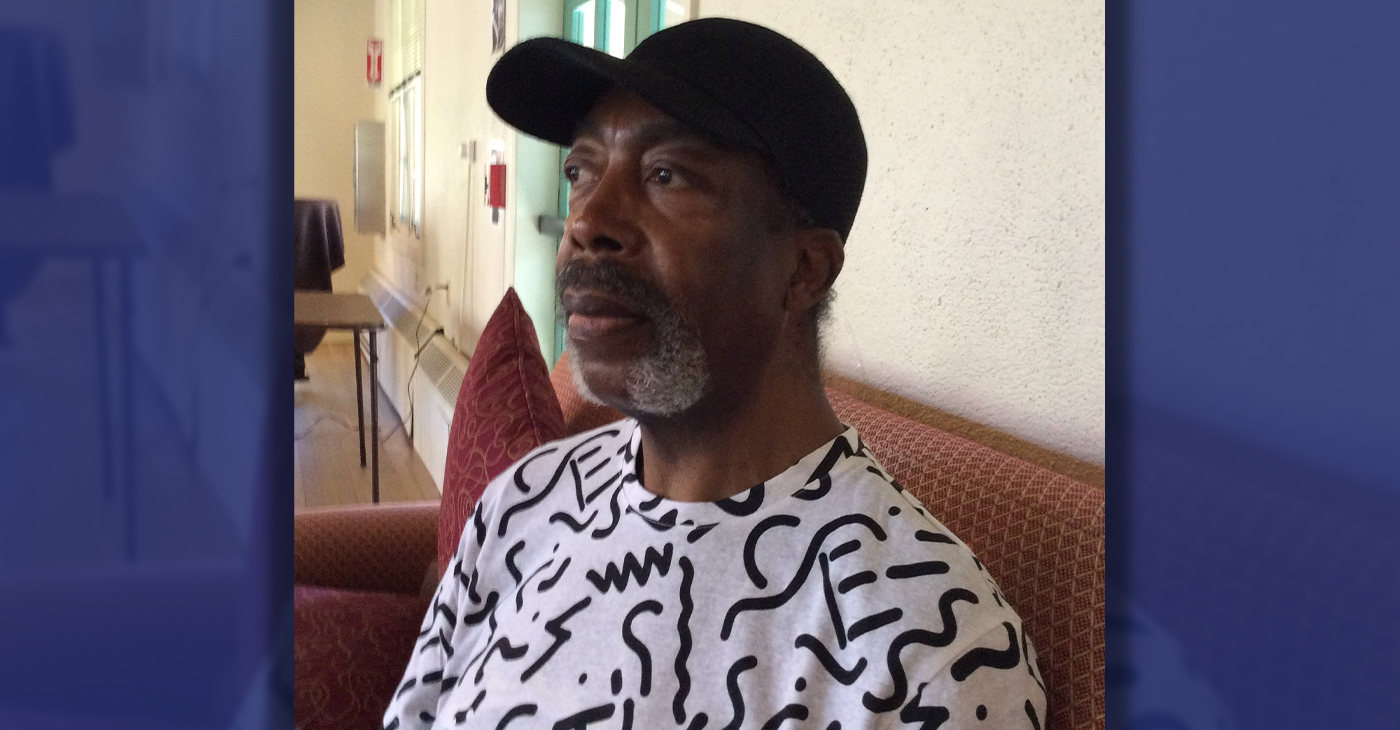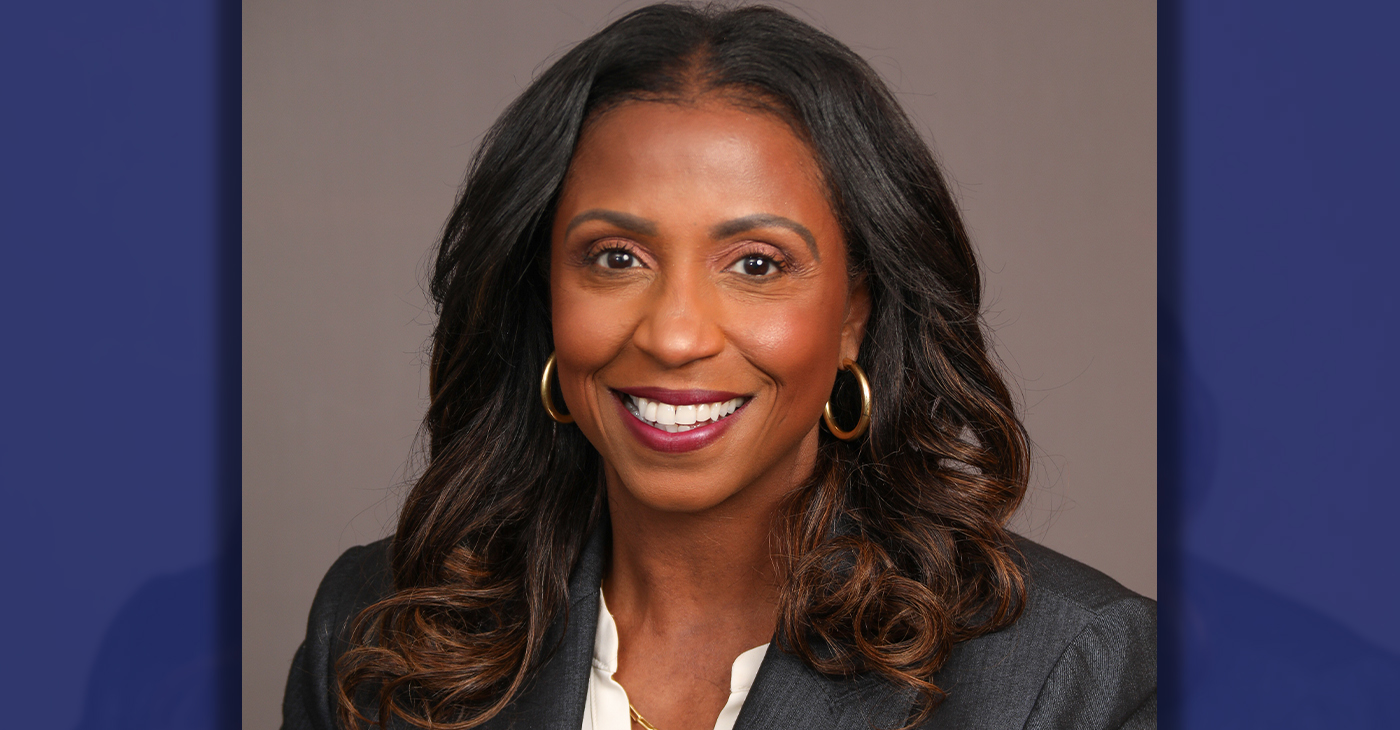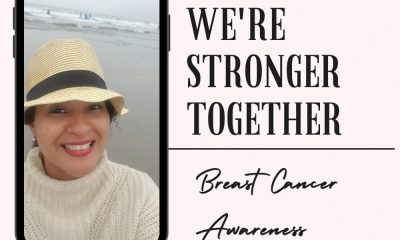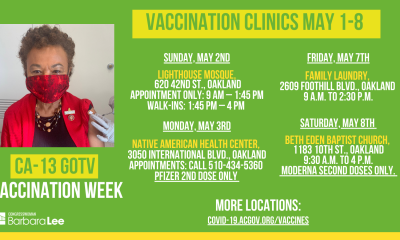Business
CVS Health Launches Health, Beauty Makeover for Drugstores

This June 20, 2011 photo shows signage at a CVS store in Philadelphia. CVS drugstores that quit tobacco sales last year are now getting health and beauty makeovers to attract customers who want more than a prescription refill, the nations second-largest drugstore chain said Wednesday, June 17, 2015. (AP Photo/Matt Rourke, File)
TOM MURPHY, AP Business Writer
CVS drugstores that quit tobacco sales last year are now getting health and beauty makeovers and a shot of ethnic diversity in some cases to attract customers who want more than a prescription refill.
The nation’s second-largest drugstore chain said Wednesday that it is adding fresh foods, healthy snacks and expanded beauty options to many of its locations. It also is testing a new format designed for stores that serve Hispanic populations.
CVS Health Corp. executives say these changes reflect customer demand. They also could help perk up store sales outside the pharmacy area that have slumped since the company phased out tobacco last September.
The push from CVS reflects similar expansions by rivals Walgreens Boots Alliance Inc. and Rite Aid Corp. into selling healthier foods and more beauty items. Drugstores have been focusing more for a few years now on customizing their stores to what shoppers in a specific market want instead of simply building new locations.
They’ve also added clinics and expanded their health care services in part to get more business from aging baby boomers and people who are gaining insurance coverage through the federal health care overhaul. And drugstores are offering a wider array of products outside the pharmacy to satisfy customers who want to make fewer stops when they go shopping.
“Health and beauty, in particular, is very high profit margin, and CVS has always been a leader there,” said Jeff Jonas, a portfolio manager who follows the industry for Gabelli Funds.
CVS Health, which recently announced a partnership with Target Corp. to expand its health care business, runs about 7,800 drugstores nationwide
The Woonsocket, Rhode Island-based chain said Wednesday that it is adding fresh and refrigerated foods to about 500 of its stores and bulking up on healthier snacks chainwide. Bagged candy, which occupies the first aisle in many stores, is being moved back and replaced with nuts, trail mixes and granola, among other items.
“Consumers used to eat three meals a day, and now they tend to be snacking through the day, and they’re really looking for a convenient location which gives them access to healthier foods,” Executive Vice President Helena Foulkes said.
CVS started adding groceries to some urban stores a few years ago to serve customers who don’t have easy access to a supermarket. The company recently started testing a new wrinkle to that themed concept with a dozen, mostly remodeled stores named CVS/pharmacy y mas in South Florida.
These stores are staffed by bilingual workers and sell brands popular with Hispanic customers as well as products like espresso makers and rice cookers. They also sell an espresso-style coffee called Cafecito in their pharmacies. CVS designed the concept based on insights it gained after buying the small Navarro Discount Pharmacy chain last year.
The company also is adding more beauty products and improving the look of that section in many of its stores.
Foulkes said health and beauty sales have grown 25 percent faster over the last three years than general merchandise and edibles in the front of their stores, or the area outside the pharmacy. Bulking up on beauty caters to women, who make up 80 percent of their store customer base.
“They see beauty as being part of their definition of health,” Foulkes said. “Women talk a lot about feeling good and looking good.”
CVS Health declined to detail how much it is spending on all the changes. The investment is focused on an area of the company’s business that could use a boost.
Revenue from the front end of the company’s established drugstores, or the area outside the pharmacy, has slipped the past couple of quarters. It was down 6 percent in the first quarter but would have risen about 2 percent without the loss of revenue brought in by tobacco.
Retailers don’t make a lot of money off tobacco, but it draws customers who often pick up other items like a can of soda or a snack when they visit.
CVS draws most of its drugstore revenue from its pharmacies. Most of its corporate revenue comes from running one of the nation’s largest pharmacy benefits management businesses, which handles prescription drug plans for employers, insurers and other customers.
Company shares climbed 65 cents to $103.82 Wednesday, slightly outpacing broader trading indexes.
Copyright 2015 The Associated Press. All rights reserved. This material may not be published, broadcast, rewritten or redistributed.
Bay Area
Mayor Breed Proposes Waiving City Fees for Night Markets, Block Parties, Farmers’ Markets, Other Outdoor Community Events
Mayor London N. Breed introduced legislation on April 26 to encourage and expand outdoor community events. The first will waive City fees for certain events, making them less costly to produce. The second will simplify the health permitting for special event food vendors through the creation of an annual permit. Both pieces of legislation are part of the Mayor’s broader initiative to bring vibrancy and entertainment to San Francisco’s public right of ways and spaces.

Mayor’s Press Office
Mayor London N. Breed introduced legislation on April 26 to encourage and expand outdoor community events.
The first will waive City fees for certain events, making them less costly to produce. The second will simplify the health permitting for special event food vendors through the creation of an annual permit. Both pieces of legislation are part of the Mayor’s broader initiative to bring vibrancy and entertainment to San Francisco’s public right of ways and spaces.
Outdoor community events are integral to San Francisco’s vibrant culture and sense of community. These events include night markets, neighborhood block parties and farmers markets, and bolster the City’s economy by supporting local businesses and attracting tourists eager to experience San Francisco’s unique charm and food scene.
They offer residents, workers and visitors, opportunities to engage with local artists, musicians, and food vendors while enjoying the San Francisco’s stunning outdoor spaces and commercial corridors.
The legislation will allow for more and new community gatherings and for local food vendors to benefit from the City’s revitalization.
“San Francisco is alive when our streets are filled with festivals, markets, and community events,” said Breed. “As a city we can cut fees and streamline rules so our communities can bring joy and excitement into our streets and help revitalize San Francisco.”
Fee Waiver Legislation
The events that can take advantage of the new fee waivers are those that are free and open to the public, occupy three or fewer city blocks, take place between 8 a.m. and 10 p.m., and have the appropriate permitting from the ISCOTT and the Entertainment Commission.
The applicant must be a San Francisco based non-profit, small business, Community Benefit District, Business Improvement District, or a neighborhood or merchant association. Fees eligible for waiver include any application, permit, and inspection/staffing fees from San Francisco Municipal Transportation Agency, Department of Public Health, Fire Department, Entertainment Commission, and Police Department.
Currently, it can cost roughly anywhere between $500-$10,000 to obtain permits for organized events or fairs, depending on its size and scope. Organizations and businesses are limited to a maximum of 12 events in one calendar year for which they can receive these fee waivers.
Food Vendor Streamlining Legislation
The second piece of legislation introduced will help special event food vendors easily participate in multiple events throughout the year with a new, cost-effective annual food permit. Food vendors who participate in multiple events at multiple locations throughout the year will no longer need to obtain a separate permit for each event. Instead, special event food vendors will be able to apply and pay for a single annual permit all at once.
“Many successful food businesses either begin as pop-up vendors or participate in special events to grow their business,” says Katy Tang, Director of the Office of Small Business. “Giving them the option for an annual special event food permit saves them time and money.”
Currently, food vendors are required to get a Temporary Food Facility (TFF) permit from the Department of Public Health (DPH) in order to participate in a special event, among permits from other departments.
Currently, each special event requires a new permit from DPH ranging from $124-$244, depending on the type of food being prepared and sold. Last year, DPH issued over 1,500 individual TFF permits. With the new annual permit, food vendors selling at more than four to six events each year will benefit from hundreds of dollars in savings and time saved from fewer bureaucratic processes.
“This legislation is a step in the right direction to make it easier for food vendors like me to participate in citywide events,” said Dontaye Ball, owner of Gumbo Social. “It saves on time, money and makes it more effective. It also creates a level of equity.”
Bay Area
Faces Around the Bay: Sidney Carey
Sidney Carey was born in Dallas, Texas. He moved with his family to West Oakland as a baby. His sister is deceased; one brother lives in Oakland. Carey was the Choir Director at Trinity Missionary Baptist Church for 18 years.

By Barbara Fluhrer
Sidney Carey was born in Dallas, Texas. He moved with his family to West Oakland as a baby. His sister is deceased; one brother lives in Oakland.
Carey was the Choir Director at Trinity Missionary Baptist Church for 18 years.
He graduated from McClymonds High with a scholarship in cosmetology and was the first African American to complete a nine-month course at the first Black Beauty School in Oakland: Charm Beauty College.
He earned his License, and then attended U.C., earning a secondary teaching credential. With his Instructors License, he went on to teach at Laney College, San Mateo College, Skyline and Universal Beauty College in Pinole, among others.
Carey was the first African American hair stylist at Joseph and I. Magnin department store in Oakland and in San Francisco, where he managed the hair stylist department, Shear Heaven.
In 2009, he quit teaching and was diagnosed with Congestive Heart Failure. He was 60 and “too old for a heart transplant”. His doctors at California Pacific Medical Center (CPMC) went to court and fought successfully for his right to receive a transplant. One day, he received a call from CPMC, “Be here in one hour.” He underwent a transplant with a heart from a 25-year- old man in Vienna, Austria
Two years later, Carey resumed teaching at Laney College, finally retiring in 2012.
Now, he’s slowed down and comfortable in a Senior Residence in Berkeley, but still manages to fit his 6/4” frame in his 2002 Toyota and drive to family gatherings in Oakland and San Leandro and an occasional Four Seasons Arts concert.
He does his own shopping and cooking and uses Para Transit to keep constant doctor appointments while keeping up with anti-rejection meds. He often travels with doctors as a model of a successful heart-transplant plant recipient: 14 years.
Carey says, “I’m blessed” and, to the youth, “Don’t give up on your dreams!”
Business
Maximizing Your Bank Branch Experience
In a world of online tools that let you make banking transactions with the touch of a button, the idea of visiting a branch might seem unnecessary. However, if you haven’t visited your local branch recently, you might be surprised by what it has to offer. Your branch is much more than a place to deposit and withdraw money – it can offer the opportunity to build valuable relationships with people who can help you achieve financial independence.

Sponsored by JPMorgan Chase & Co.
In a world of online tools that let you make banking transactions with the touch of a button, the idea of visiting a branch might seem unnecessary.
However, if you haven’t visited your local branch recently, you might be surprised by what it has to offer. Your branch is much more than a place to deposit and withdraw money – it can offer the opportunity to build valuable relationships with people who can help you achieve financial independence.
Diedra Porché, Head of Community and Business Development at Chase, talks about how the bank model has evolved to maximize the branch experience for customers; how connecting with your local branch team can help you think differently about money and investing for your future.
How can a customer feel connected to a bank branch?
I love that question because we ask ourselves the same thing every day. Being part of the community means meeting with local leaders to find out what they need from us and then designing our branches around that. For example, at some of our community branches we have what we call a living room where we can host financial workshops, small business pop-up shops or nonprofit organization meetings. We also hire locally. You feel much more connected talking about financial aspirations with people from your community who went to the same high school, place of worship or maybe frequented the same recreation center down the street when they grew up.
How can I build a relationship with my bank?
Customers should feel comfortable sharing their goals, needs and wants with their banker. Also, it helps to remember the Community Manager is there to help solve your finance challenges and build a roadmap for success. You might have a short-term or long-term goal to open a business, build your credit, become debt-free, buy a home, or save for retirement, and our community team can help. At Chase, we strive to make dreams possible for everyone, everywhere, every day. Your financial future starts with building those relationships.
How can customers change negative perceptions they have about managing their money?
Far too often, customers are intimidated when they visit a bank. Our goal is to demystify banking and money myths empowering people to make the right decisions. For example, a big myth is assuming you need a lot of money to have a bank account. You don’t! Another myth is you need to carry a balance on your credit card to build credit — actively using your credit card can demonstrate that you can use credit responsibly but carrying a balance won’t necessarily improve your credit score. Finally, understanding mobile and online banking safety is key. There are so many safeguards and protections in place to guard your personal information and funds.
What’s an easy step one can take to shift their financial behavior right now?
Cultivating self-awareness is a good first step. Start by taking inventory of your spending. Be honest with yourself about what you need and what you want. Too often, people confuse the two, which leads to bad decisions. Rent is something you need to pay. An extra pair of shoes is something you may want but before you buy them ask yourself if that’s the best use of your hard-earned money. Too often, our beliefs and our fears shape our financial realities. If any of those beliefs are limiting your financial behavior, it’s important to question and examine them, and then decide you’re open to learning something different.
What’s one perception about banking that you’d like to change?
I think folks are surprised there are so many resources available and accessible both at our branches and online, it’s always a good idea to visit a nearby branch and speak to a Community Manager or banker. Outside of what we offer in-branch, our teams also work with local neighborhood partners who provide a variety of services to support the community, businesses and residents. I received a unique piece of feedback from an employee who started with the bank and had lived in the same community his whole life. When he visited his local community branch, he said, “Diedra, when I walked in, I felt dignified.” Every time I recount that story, it warms my heart because that’s what we want — we want our centers to belong to the community.
-

 Community3 weeks ago
Community3 weeks agoFinancial Assistance Bill for Descendants of Enslaved Persons to Help Them Purchase, Own, or Maintain a Home
-

 Business3 weeks ago
Business3 weeks agoV.P. Kamala Harris: Americans With Criminal Records Will Soon Be Eligible for SBA Loans
-

 Activism3 weeks ago
Activism3 weeks agoOakland Post: Week of April 10 – 16, 2024
-

 Community3 weeks ago
Community3 weeks agoAG Bonta Says Oakland School Leaders Should Comply with State Laws to Avoid ‘Disparate Harm’ When Closing or Merging Schools
-

 Activism1 week ago
Activism1 week agoOakland Post: Week of April 24 – 30, 2024
-

 Community2 weeks ago
Community2 weeks agoRichmond Nonprofit Helps Ex-Felons Get Back on Their Feet
-

 Community2 weeks ago
Community2 weeks agoOakland WNBA Player to be Inducted Into Hall of Fame
-

 Community2 weeks ago
Community2 weeks agoRPAL to Rename Technology Center for Retired Police Captain Arthur Lee Johnson


![Marin County Public Health Officer Dr. Matt Willis updated the Board of Supervisors on March 28 about the state of the local opioid crisis[PDF] and outlined strategies to reduce fatal overdoes in Marin in 2023.](https://www.postnewsgroup.com/wp-content/uploads/2023/04/opioid-settlement-featured-web-400x240.jpg)
![Marin County Public Health Officer Dr. Matt Willis updated the Board of Supervisors on March 28 about the state of the local opioid crisis[PDF] and outlined strategies to reduce fatal overdoes in Marin in 2023.](https://www.postnewsgroup.com/wp-content/uploads/2023/04/opioid-settlement-featured-web-80x80.jpg)





















































